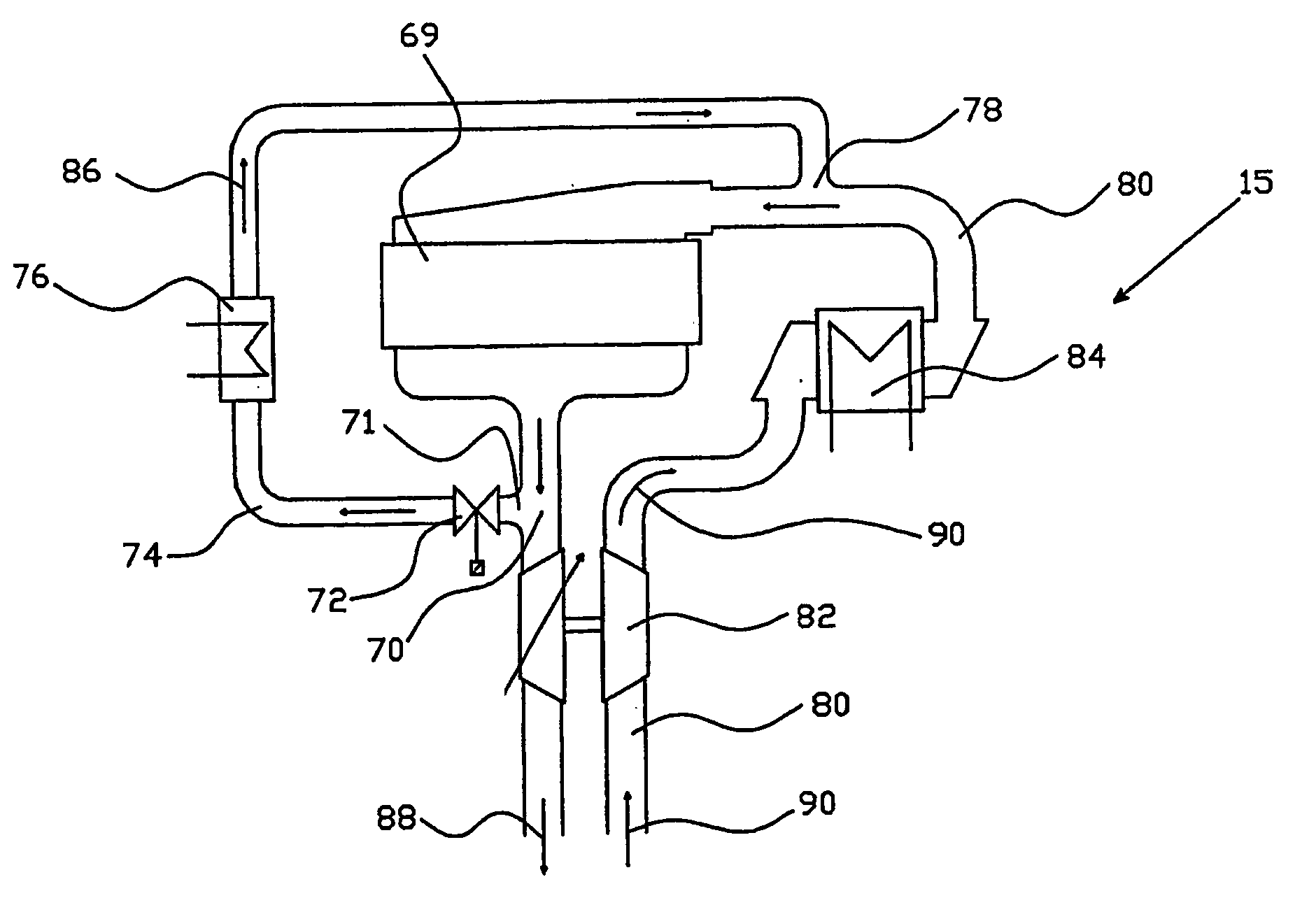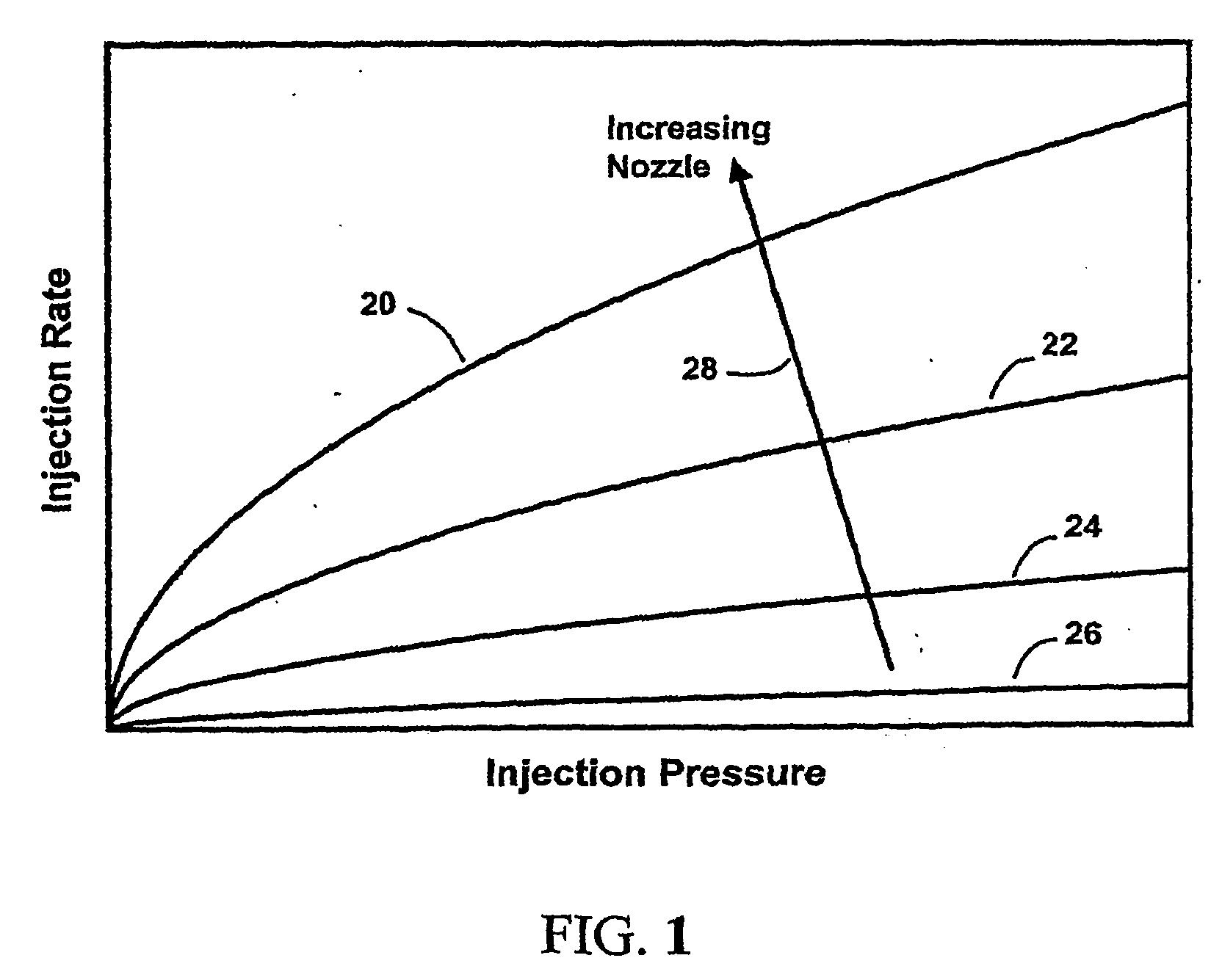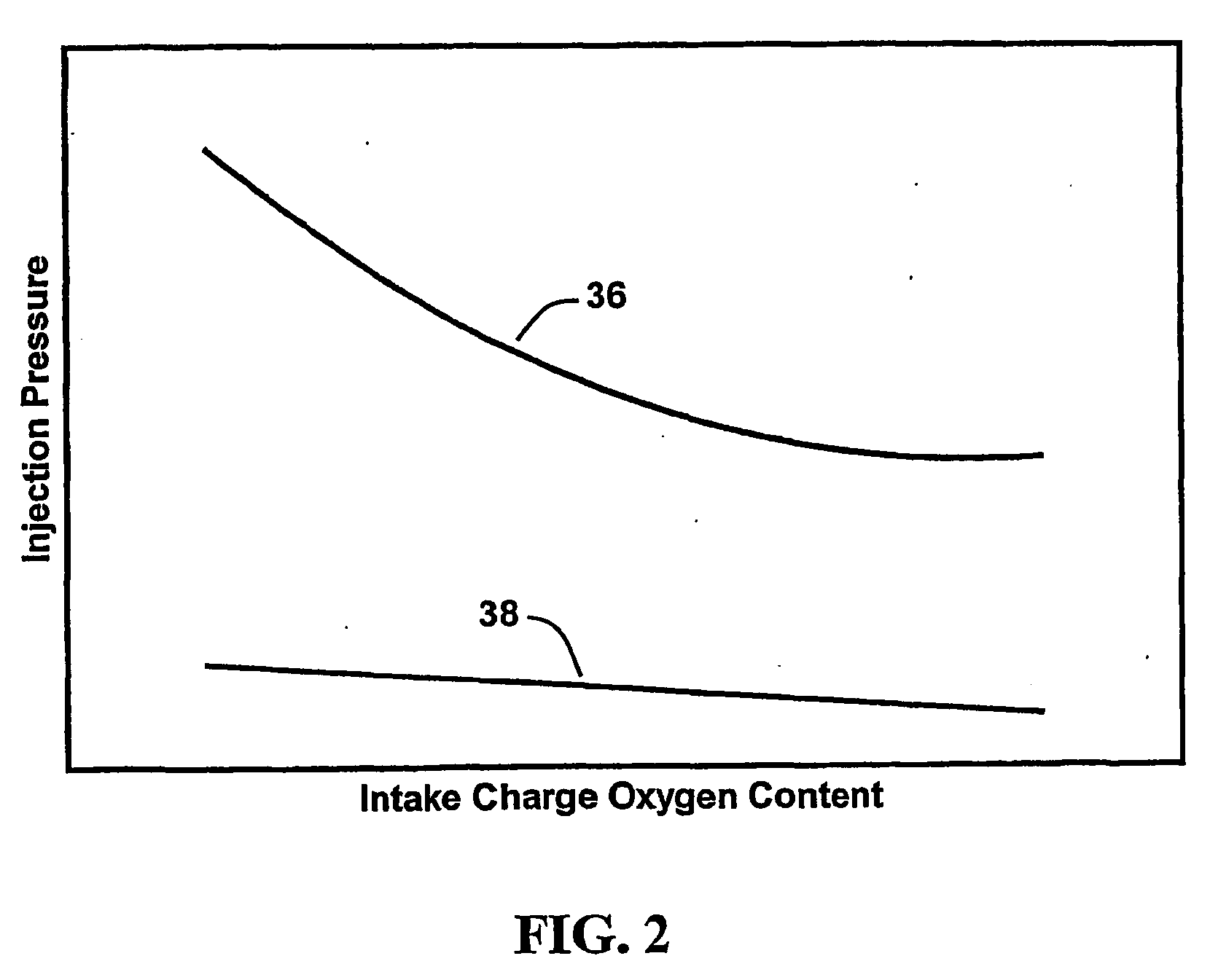Exhaust gas recirculation methods and apparatus for reducing NOX emissions from internal combustion engines
a technology of exhaust gas recirculation and internal combustion engine, which is applied in the direction of mechanical equipment, machines/engines, non-fuel substance addition to fuel, etc., can solve the problems of limited utility of egr in reducing nox emissions of current diesel engines, engine producing other pollutants, and increasing particulates, so as to reduce sensitivity to misfire, increase egr, and increase egr rate
- Summary
- Abstract
- Description
- Claims
- Application Information
AI Technical Summary
Benefits of technology
Problems solved by technology
Method used
Image
Examples
second embodiment
[0067]FIG. 6 shows EGR system 15B according to the invention. In the embodiment of FIG. 6, recirculated exhaust gases are mixed with intake air upstream from an intake cooler 108.
[0068] Exhaust gas from each of a number of combustion chambers in an engine block 92 is carried into an exhaust line 94. At an EGR junction 96 an EGR line 98 meets exhaust line 94. EGR valve 100 is disposed within EGR line 98. An EGR cooler 102 is disposed downstream of EGR valve 100 within EGR line 98. EGR line 98 connects to intake line 104 at intake junction 106. Intake line 104 continues past intake junction 106 to intake charge cooler 108. A fixed or variable geometry turbocharger 110 compresses intake air upstream from intake junction 106. Beyond intake charge cooler 108, intake line 104 directs intake air into intake lines (not shown) leading to each of the combustion chambers of engine block 92.
[0069] EGR flow direction 112, exhaust flow direction 114 and intake air flow direction 116 are shown.
[...
third embodiment
[0072]FIG. 7 shows an EGR system 15C according to the invention. In the embodiment of FIG. 7, recirculated exhaust gases are mixed with fresh intake air upstream from a turbocharger compressor.
[0073] Exhaust line 130 is connected to carry exhaust gases away from combustion chambers in engine block 131. EGR line 132 branches off of exhaust line 130 at EGR junction 134. EGR valve 136 and EGR cooler 138 are both disposed in EGR line 132. EGR line 132 joins into intake line 140 at an intake junction 144 upstream of a fixed or variable geometry turbocharger 142. An intake charge cooler 146 is located in intake line 140 downstream from the compressor of turbocharger 142. Downstream from intake charge cooler 146, intake line 140 is connected to deliver intake air to each combustion chamber disposed within engine block 131.
[0074] EGR flow direction 145, exhaust flow direction 147 and intake air flow direction 148 are all shown.
[0075] In the embodiment of FIG. 7, exhaust gas from any of a ...
fifth embodiment
[0081]FIG. 9 shows an EGR system 15 E according to the invention. The embodiment of FIG. 9 includes a power turbine 210 in an exhaust line 194 downstream from a turbocharger 198. An EGR line 192 connects to exhaust line 194 at an EGR junction 190. EGR cooler 200, intake junction 202 and intake line 204 are provided. An EGR valve 208 regulates the flow of exhaust gases through EGR line 192.
[0082] An intake charge cooler 206 is connected downstream of the compressor portion of turbocharger 198 in intake line 204. Also, in this embodiment, power turbine 210 is provided.
[0083] EGR flow direction 212, exhaust flow direction 214 and intake air flow direction 216 are shown.
[0084] Power turbine 210 allows for additional turbine energy to be provided following extraction of exhaust gas for EGR at junction 190. Power turbine 210 causes backpressure at junction 190. This helps to drive exhaust gases through EGR line 192. A power turbine could also be provided in other embodiments of the inve...
PUM
 Login to View More
Login to View More Abstract
Description
Claims
Application Information
 Login to View More
Login to View More - R&D
- Intellectual Property
- Life Sciences
- Materials
- Tech Scout
- Unparalleled Data Quality
- Higher Quality Content
- 60% Fewer Hallucinations
Browse by: Latest US Patents, China's latest patents, Technical Efficacy Thesaurus, Application Domain, Technology Topic, Popular Technical Reports.
© 2025 PatSnap. All rights reserved.Legal|Privacy policy|Modern Slavery Act Transparency Statement|Sitemap|About US| Contact US: help@patsnap.com



